Scabies & Lice Treatment Selector
Select your situation
Answer these questions to get a personalized treatment recommendation.
Recommended Treatment
Why this recommendation?
Key details
When you or a family member gets the unmistakable itch of scabies or a stubborn lice infestation, the first question is usually: "What works best?" There are dozens of products on the market, but the most prescribed is Permethrin. This guide breaks down Acticin (Permethrin) side‑by‑side with the most common alternatives, so you can pick the right option for your situation.
Why a head‑to‑head comparison matters
Scabies and pediculosis (lice) spread quickly, especially in close‑quarter settings like schools or nursing homes. Choosing an ineffective or overly harsh treatment can prolong the outbreak, cause unnecessary side effects, and waste money. A clear comparison lets you weigh efficacy, safety, cost, and convenience-all the factors that decide whether the infection disappears after one application or lingers for weeks.
What is Acticin (Permethrin)?
Acticin (Permethrin) is a synthetic pyrethroid insecticide that acts as a topical medication for scabies and head lice. Marketed in a 5% cream for scabies and a 1% lotion for lice, it was first approved by the FDA in the early 1990s and has become the first‑line therapy in most clinical guidelines.
How Acticin works
Permethrin interferes with sodium channels in the nerve cells of mites and lice, causing rapid paralysis and death. Because it targets the insect nervous system, human nerves are largely unaffected at therapeutic doses, which explains its high safety margin.
Efficacy of Acticin
Clinical trials consistently show cure rates above 95% for scabies when the 5% cream is left on the skin for 8-14hours before washing off. For head lice, a single 1% lotion application eliminates about 90% of live insects, with a second application after one week catching any newly hatched nymphs.
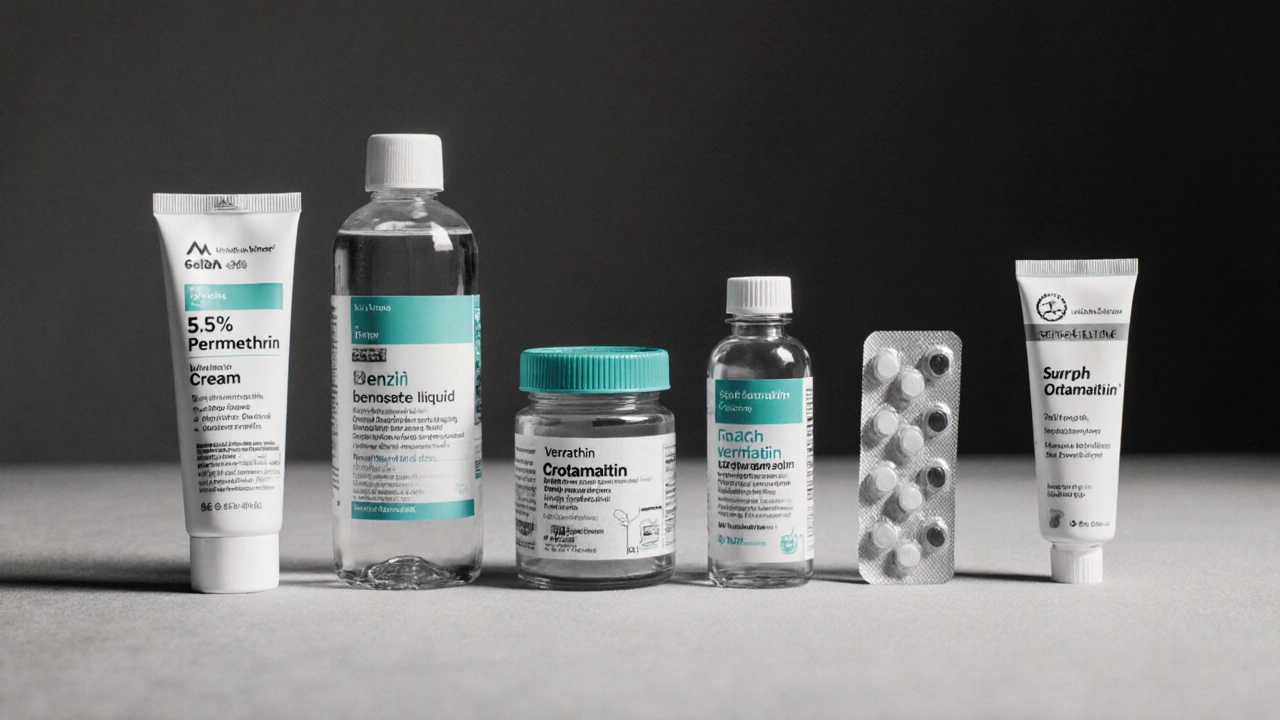
Safety profile and side effects
Most users experience mild skin irritation-redness, itching, or a burning sensation-that usually fades within a day. Rare allergic reactions can include swelling, hives, or blistering. Because the drug is poorly absorbed through intact skin, systemic toxicity is virtually unheard of in children and adults alike.
Common alternatives to Acticin
While Permethrin tops the guideline charts, several other agents are used when resistance, allergy, or personal preference comes into play.
Benzyl benzoate is a classic scabicide and pediculicide that works by suffocating the mite or louse.
- Form: 25% liquid concentrate (diluted with water) or 10% lotion.
- Application: Must be left on for 24hours for scabies; for lice, 1 hour is typical.
- Side effects: Strong odor, skin irritation, and a burning sensation are common.
Malathion is an organophosphate insecticide used mainly for head lice.
- Form: 0.5% lotion.
- Application: One 10‑minute soak; repeat after 7-10 days.
- Side effects: Headache, nausea, and scalp irritation; not recommended for children under 2 years.
Ivermectin is an oral antiparasitic that also treats scabies.
- Form: 200µg/kg tablet.
- Dosing: Single dose for uncomplicated scabies; a second dose after one week for crusted cases.
- Side effects: Mild dizziness, nausea, and transient rash.
Sulfur ointment is a historic, oil‑based treatment for scabies.
- Form: 5-10% sulfur in petrolatum.
- Application: Overnight (8-12hours) for 3 consecutive nights.
- Side effects: Strong smell and possible skin staining; safe for infants.
Crotamiton (also known as Nikasol) is a milder scabicide and antipruritic.
- Form: 10% cream.
- Application: Applied nightly for 5-7 days.
- Side effects: Minimal irritation; slower cure rate (70‑80%).
Side‑by‑side comparison table
Key attributes of Acticin (Permethrin) vs common alternatives
Attribute
Acticin (Permethrin)
Benzyl benzoate
Malathion
Ivermectin (oral)
Sulfur ointment
Crotamiton
Primary indication
Scabies & lice
Scabies & lice
Lice only
Scabies (incl. crusted)
Scabies
Scabies
Formulation
5% cream / 1% lotion
25% liquid / 10% lotion
0.5% lotion
200µg/kg tablet
5‑10% ointment
10% cream
Cure rate (clinical studies)
94‑98%
80‑85%
75‑80%
90‑95%
70‑80%
70‑85%
Typical application time
8‑14h (scabies) / 10min (lice)
24h (scabies) / 1h (lice)
10min (lice)
Single oral dose
8‑12h overnight
Nightly 5‑7days
Common side effects
Mild irritation
Burning, odor
Headache, scalp irritation
Dizziness, nausea
Odor, staining
Low irritation
Age restrictions
2months+ (scabies) / 6months+ (lice)
6months+ (scabies) / 2years+ (lice)
2years+ (lice)
5years+ (oral)
Infants OK
2years+
Cost (US average)
$15‑$20 per tube
$10‑$15 per bottle
$12‑$18 per bottle
$30‑$45 per tablet pack
$8‑$12 per jar
$9‑$14 per tube
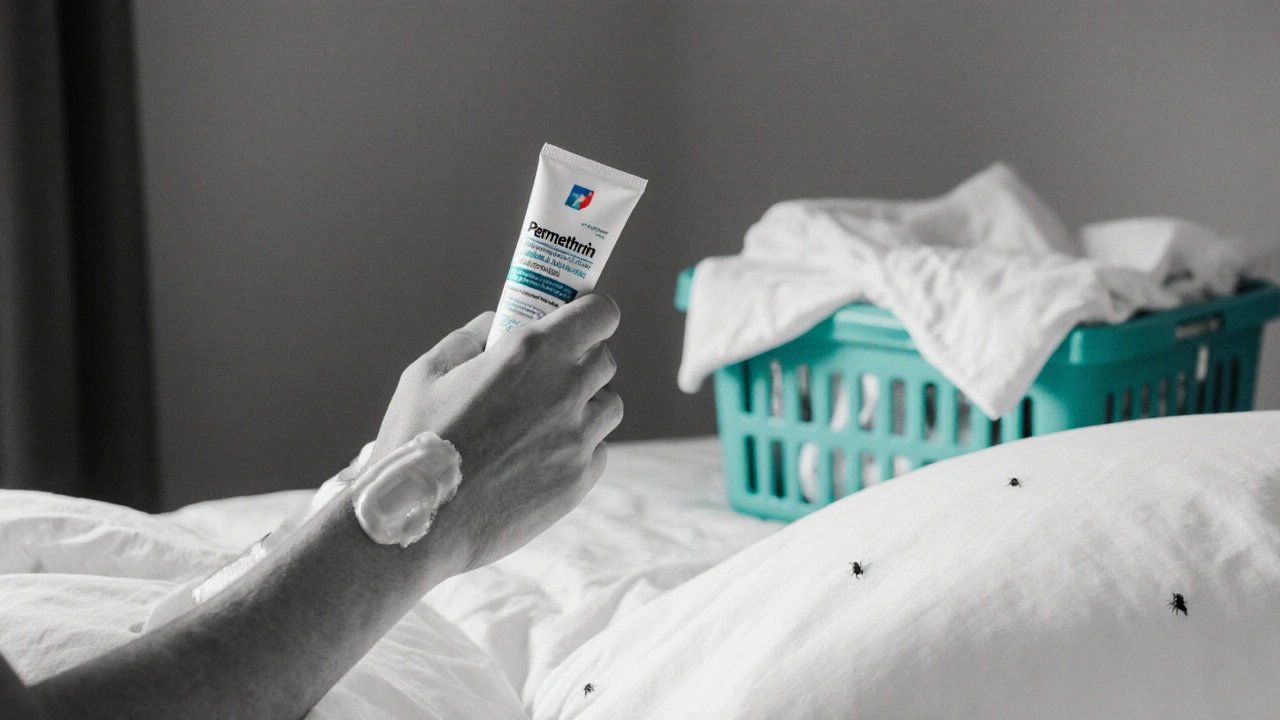
How to choose the right option
| Attribute | Acticin (Permethrin) | Benzyl benzoate | Malathion | Ivermectin (oral) | Sulfur ointment | Crotamiton |
|---|---|---|---|---|---|---|
| Primary indication | Scabies & lice | Scabies & lice | Lice only | Scabies (incl. crusted) | Scabies | Scabies |
| Formulation | 5% cream / 1% lotion | 25% liquid / 10% lotion | 0.5% lotion | 200µg/kg tablet | 5‑10% ointment | 10% cream |
| Cure rate (clinical studies) | 94‑98% | 80‑85% | 75‑80% | 90‑95% | 70‑80% | 70‑85% |
| Typical application time | 8‑14h (scabies) / 10min (lice) | 24h (scabies) / 1h (lice) | 10min (lice) | Single oral dose | 8‑12h overnight | Nightly 5‑7days |
| Common side effects | Mild irritation | Burning, odor | Headache, scalp irritation | Dizziness, nausea | Odor, staining | Low irritation |
| Age restrictions | 2months+ (scabies) / 6months+ (lice) | 6months+ (scabies) / 2years+ (lice) | 2years+ (lice) | 5years+ (oral) | Infants OK | 2years+ |
| Cost (US average) | $15‑$20 per tube | $10‑$15 per bottle | $12‑$18 per bottle | $30‑$45 per tablet pack | $8‑$12 per jar | $9‑$14 per tube |
Think of the decision like a simple checklist. Ask yourself:
- What’s the diagnosis? Scabies needs a longer contact time; lice often clear with a quick soak.
- Any known allergies? If the skin reacts to pyrethroids, benzyl benzoate or sulfur might be safer.
- Age of the patient? Infants under 2months can’t use Permethrin for scabies, but sulfur is fine.
- Cost and availability? Over‑the‑counter options like benzyl benzoate are cheaper but may smell worse.
- Resistance concerns? In some regions, head lice have developed resistance to Permethrin; Malathion or Ivermectin can then be better choices.
When you tick the boxes, the best match often emerges without needing a doctor’s prescription-though severe crusted scabies should still be evaluated by a clinician.
Practical tips for optimal results
- Read the label. Follow the exact timing; under‑treating is the most common cause of failure.
- Wash bedding and clothing. Use hot water (≥50°C) and dry on high heat for at least 24hours after treatment.
- Treat all close contacts. Even if they’re asymptomatic, a single missed case can reignite the outbreak.
- Check for re‑infestation. For lice, re‑examine the scalp 7days after the first application.
- Document side effects. If severe irritation occurs, stop use and consult a healthcare provider.
Frequently Asked Questions
Can I use Acticin (Permethrin) on infants?
For scabies, the 5% cream is approved for children 2months and older. For head lice, the 1% lotion requires the child to be at least 6months old. If you have a newborn, sulfur ointment is the safer fallback.
Why did my scabies return after using Permethrin?
Common reasons include insufficient contact time, untreated household members, or resistant mites. Verify you left the cream on for the full 8‑14hours, wash all linens, and treat everyone in the household simultaneously.
Is resistance to Permethrin a real problem?
Yes, especially in some North American and European regions. If you notice persistent lice after two correct applications, consider switching to Malathion or oral Ivermectin under medical guidance.
Can I combine Permethrin with another scabicide?
Combining treatments is generally not recommended because it raises the risk of skin irritation. Instead, choose the most suitable single agent based on the checklist above.
How long should I wait before re‑treating?
For scabies, a second application is rarely needed unless symptoms persist after 2weeks. For lice, a 7‑day follow‑up treatment catches any newly hatched nymphs that survived the first round.


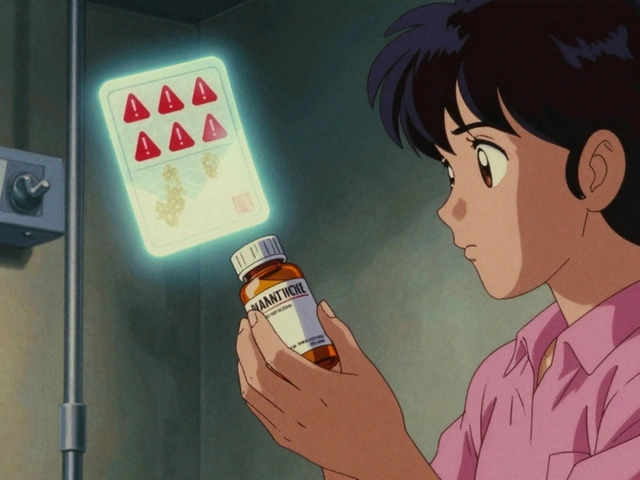
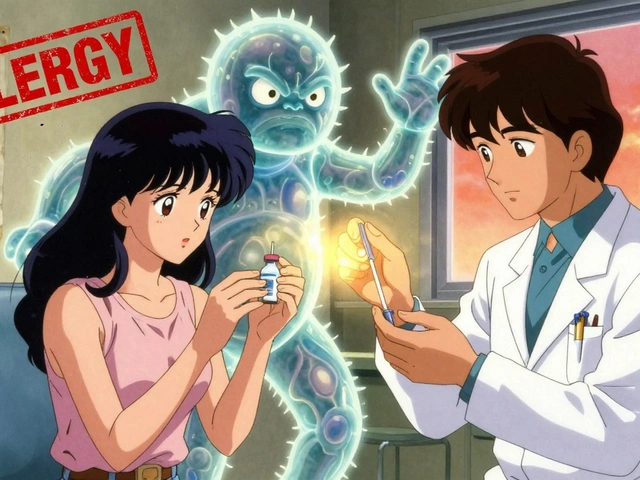
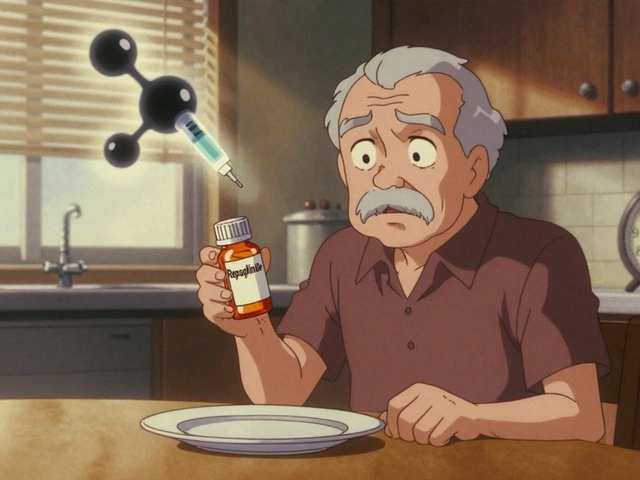

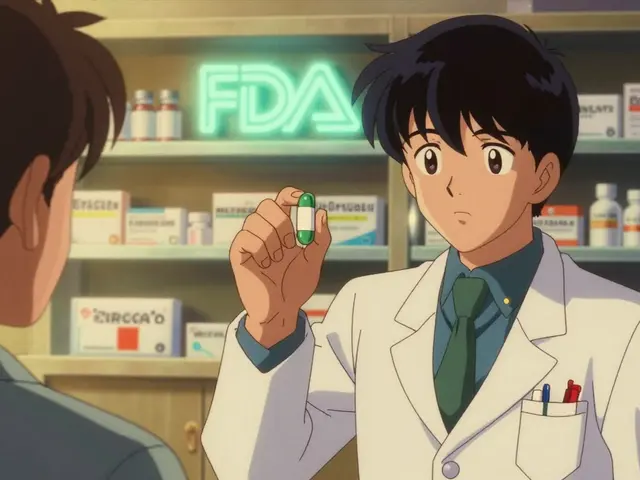
Valerie Vanderghote
October 17, 2025 AT 01:50I remember the first time my teenage son came crawling into my bedroom, scratching his arms like a wild animal, and I was instantly thrown into the chaotic world of scabies treatments. The panic that followed was amplified by the endless online forums promising miracle cures, each louder than the last, and I felt an almost unbearable pressure to choose the perfect product. When I finally settled on Acticin, the 5% cream, I followed the instructions to the letter, applying it before bedtime, covering every inch of skin, even the tiny spaces between my son’s fingers. The next morning, the itching persisted, which only deepened my anxiety, as though the mites were mocking me with every restless night. I read the side‑effect section and, true to form, I experienced a mild burning sensation that flared up like a tiny volcano on his elbows. But I was determined to push through, because the alternative-watching my child suffer in silence-was far worse. I also took the time to wash all bedding at a scorching 60°C, a step I once dismissed as unnecessary, now feeling like a ritual cleansing the house of invisible invaders. Meanwhile, my husband, skeptical as ever, suggested we try benzyl benzoate, citing its lower cost and “natural” vibe, which only added to the emotional tug‑of‑war inside our home. I could hear the arguments echoing through the hallway, each claim louder than the last, and I felt my own voice drown in the sea of contradictory advice. In the end, the second application of Acticin after one week finally quelled the itching, and the relief was almost as palpable as the grief that had built up over the past two weeks. Looking back, I realize that the emotional rollercoaster was not just about a skin condition but about the fear of failure as a parent, the dread of endless costs, and the guilt of possibly exposing my younger sibling. The whole experience taught me that in matters of scabies, the decision matrix must include not only efficacy and safety, but also the emotional bandwidth of the entire family. If you find yourself stuck between a pricey prescription and a smelly home remedy, remember that the true cost is often measured in sleepless nights and whispered worries. Trust the data, but also trust your gut when it screams for a gentler approach, because irritation can quickly become a secondary battle. And finally, never underestimate the power of a supportive partner who will fetch the hot water, the detergent, and the patience needed to see the fight through. In the grand scheme, Acticin proved its worth, but the journey reminded me that every scabies saga is as much a story of human resilience as it is a medical case study.
Michael Dalrymple
October 18, 2025 AT 19:30What you’ve described really underscores the multidimensional nature of treatment decisions. From a clinical standpoint, the efficacy data for permethrin is indeed compelling, and the safety profile is reassuring for both children and adults. However, the psychosocial burden you mention is equally important; families often underestimate the emotional toll of prolonged itching and the stigma attached to infestations. Incorporating the checklist you outlined can help align medical recommendations with the lived experience of patients. Moreover, ensuring that all close contacts are treated simultaneously can prevent the common pitfall of reinfestation, which you highlighted. It’s also prudent to consider local resistance patterns, especially for lice, before defaulting to permethrin as the first line. In summary, a balanced approach that blends evidence‑based medicine with empathetic support tends to yield the best outcomes. I commend your diligence in navigating both the scientific and emotional aspects of scabies management.
Richard O'Callaghan
October 20, 2025 AT 07:37so i tried acticin on my niece it was okay but the smell was weird and she cried a bit
the instructions said leave it 8hours i set a timer but i fell asleep and missed it
next day the scratching continued i think i need a stronger option maybe benzyl benzoate
also the cream made a red rash on her elbow i was not sure if it was from the med or from rubbing too hard
anyway i will look up more reviews before the next use
Alexis Howard
October 21, 2025 AT 16:57permethrin is overrated.
Steve Holmes
October 22, 2025 AT 23:30Wow, that's quite the claim-!; however, I think it's worth pointing out that the extensive clinical trials consistently demonstrate >95% cure rates for scabies with the 5% cream, and the side‑effects are typically mild, temporary, and self‑limiting!!!; besides, the convenience of a single application often outweighs the occasional odor or mild irritation!!!; for many families, the balance of efficacy, safety, and cost makes permethrin a solid first‑line choice!!!
Tom Green
October 24, 2025 AT 03:17Appreciate the thoroughness, Steve-let’s also remember that treatment success hinges on proper application technique and household-wide compliance. If you miss the contact time or skip a family member, the mite reservoir stays alive, and you’ll see the same itch returning. A mixed‑formality reminder: double‑check the label, set a timer, and wash everything at least 60 °C. This pragmatic approach can bridge the gap between clinical data and real‑world outcomes.
Frank Diaz
October 25, 2025 AT 04:17From a philosophical perspective, the battle against scabies is emblematic of humanity’s perpetual struggle with unseen adversaries. The permethrin molecule, a synthetic pyrethroid, exemplifies how we harness chemistry to intervene in the delicate equilibrium of life and death at a microscopic scale. Yet, our reliance on such agents raises ethical questions about resistance and ecological impact, even as we marvel at the near‑perfect cure rates. The discourse surrounding alternative treatments-from sulfur’s ancient heritage to ivermectin’s oral convenience-reflects a broader narrative of innovation versus tradition. Ultimately, the choice of therapy becomes a microcosm of personal agency, societal norms, and the ever‑evolving tapestry of medical knowledge.
Russell Abelido
October 26, 2025 AT 02:30That was beautifully put, Frank! I totally feel the weight of those ethical dilemmas when I’m dealing with a stubborn outbreak in my own family. 😔 It’s like juggling a science experiment and a family drama at the same time-one missed dosage can turn a simple cure into a full‑blown saga. I’ve actually tried the sulfur ointment on my infant cousin because the smell was terrible but the safety profile was a lifesaver. The whole experience reminded me that sometimes the oldest remedies hold hidden power, even if they come with a pungent aroma. 🙏
lisa howard
October 26, 2025 AT 20:57My mother once suffered from a severe scabies infestation that lasted longer than a month, and the whole family lived in constant dread of the relentless itching; she tried every over‑the‑counter solution, from benzyl benzoate to a homemade rice‑flour paste, each promising relief yet delivering only temporary respite. When we finally turned to Acticin, the process became a ritual: washing all linens at boiling temperatures, sealing clothing in airtight bags, and meticulously applying the cream to every nook and cranny, even those we normally ignore, like behind the ears and the groin area. The first night was a trial by fire, as the burning sensation made her scream in pain, but we trusted the instructions and left the medication on for the full twelve hours. By the third day, the red bumps began to subside, and the dreaded nocturnal scratching ceased, giving us a glimpse of peace that had seemed unattainable for weeks. Yet, the emotional aftermath lingered; she confessed feeling embarrassed whenever anyone mentioned skin conditions, and the stigma of infestation haunted her social interactions for months after the physical symptoms vanished. This experience taught me that the efficacy of a treatment is only half the battle-the other half is navigating the psychological fallout, the shame, and the fear of contagion that can cripple a household. In our case, the combination of a potent medication and unwavering family support finally broke the cycle, allowing us to reclaim our nights and our confidence. Looking back, I realize that the true power of Acticin lies not just in its chemical action but in its ability to restore a sense of normalcy when lives have been disrupted by invisible parasites. The journey also reinforced the importance of education, as misconceptions about scabies often fuel unnecessary panic and delay proper care. If you ever find yourself in a similar struggle, remember that perseverance, thoroughness, and a dash of compassion can turn a nightmare into a manageable health issue.
Cindy Thomas
October 27, 2025 AT 13:37While the drama sounds intense, I think the data clearly shows permethrin is the gold standard; you don’t need to overcomplicate the process with exotic remedies.
Kate Marr
October 28, 2025 AT 03:30America should prioritize home‑grown treatments over foreign imports to keep our families safe.